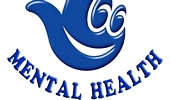|
|
 Acne (1,500) Acne (1,500)
 Addictions (1,500) Addictions (1,500)
 Advice (1,500) Advice (1,500)
 Allergies (1,092) Allergies (1,092)
 Alternative Medicine (1,500) Alternative Medicine (1,500)
 Anti Aging (1,500) Anti Aging (1,500)
 Breakup (1,500) Breakup (1,500)
 Cancer (1,499) Cancer (1,499)
 Dental Care (1,500) Dental Care (1,500)
 Disabilities (1,500) Disabilities (1,500)
 Divorce (1,500) Divorce (1,500)
 Elderly Care (1,498) Elderly Care (1,498)
 Goal Setting (1,500) Goal Setting (1,500)
 Hair Loss (1,500) Hair Loss (1,500)
 Health and Safety (1,497) Health and Safety (1,497)
 Hearing (1,500) Hearing (1,500)
 Law of Attraction (1,499) Law of Attraction (1,499)
 Marriage (1,500) Marriage (1,500)
 Medicine (1,497) Medicine (1,497)
 Meditation (1,499) Meditation (1,499)
 Men's Health (1,500) Men's Health (1,500)
 Mental Health (1,500) Mental Health (1,500)
 Motivational (1,500) Motivational (1,500)
 Nutrition (1,495) Nutrition (1,495)
 Personal Injury (1,499) Personal Injury (1,499)
 Plastic Surgeries (1,500) Plastic Surgeries (1,500)
 Pregnancy (1,496) Pregnancy (1,496)
 Psychology (1,500) Psychology (1,500)
 Public Speaking (1,500) Public Speaking (1,500)
 Quit Smoking (1,500) Quit Smoking (1,500)
 Religion (1,499) Religion (1,499)
 Self Help (1,500) Self Help (1,500)
 Skin Care (1,500) Skin Care (1,500)
 Sleep (1,500) Sleep (1,500)
 Stress Management (1,500) Stress Management (1,500)
 Teenagers (1,492) Teenagers (1,492)
 Time Management (1,500) Time Management (1,500)
 Weddings (1,500) Weddings (1,500)
 Wellness (1,500) Wellness (1,500)
 Women's Health (1,500) Women's Health (1,500)
 Women's Issues (1,500) Women's Issues (1,500)
|
Abstract
Are you confused by all the different options you hear about making your skin look younger? Non-surgical skin rejuvenation, laser skin resurfacing, wrinkle treatment, fillers, face lift, and skin tightening are common approaches for improving the look of your skin. Among these options, laser skin resurfacing is the most effective, non or semi-invasive surgical approach to achieve drastic results. A multitude of technologies for skin resurfacing is currently available. They include carbon dioxide lasers, erbium lasers, plasma and radiofrequency devices delivering their results in a fractional, ablative or non-ablative manner. This review will help you understand the different skin resurfacing options and determine which one fits you best. You will learn about the different treatments, looking side by side at each attribute of skin resurfacing – expected results, social downtime, number of treatments needed, time results last, and cost.
Skin Resurfacing - Introduction Maintaining beauty and a youthful appearance date back several thousand years to the ancient Egyptian. However, the advances in technology have never before awarded such a choice of modalities. Non-surgical skin rejuvenation, laser skin resurfacing, wrinkle treatment, fillers, face lift, and skin tightening are common approaches for improving the look of your skin. Particularly, the introduction of a multitude of skin resurfacing devices has caused a lot of confusion amongst consumers. Among these options, laser skin resurfacing is the most effective non or semi-invasive surgical approach to achieve drastic results.
First of all you must know that every new resurfacing laser or device is measured against the industry’s most powerful machine for the past 40 years, the carbon dioxide (CO2) laser. It was invented in 1964 and has been the most widely used laser in medicine. In the area of dermatology, its use has been predominantly for facial resurfacing. It often achieves desired results in a single treatment, works on fine and intermediate lines and acne scars, maximally tightens the skin and delivers results that last a number of years. Its drawback is a long, 10-14 day social downtime, making it less desirable for any working person. To overcome this handicap and minimize healing time, many devices that do not injure the uppermost layers of the skin (non-ablative) have recently been developed by the aesthetic industry. The single most important advance was the creation of fractional technology. Leaving small islands of normal skin behind, the skin regenerates much faster than with the traditional full ablation of skin.
You will learn about the current industry recognized ablative and non-ablative strategies that rejuvenate your skin and about the benefits and downsides of each of these techniques.
Fractionated Ablative Lasers
CO2 Laser
As an ablative laser, it vaporizes the tissue and is able to eradicate fine and intermediate lines, smoothes overall skin texture and acne scars, eradicates uneven pigmentation as well as tightens the skin. It lets you appear about 10 years younger and often replaces the need for a face lift unless skin sagging is severe. Preparation and postoperative care most closely resembles a full fletched surgical procedure, however, CO2 laser resurfacing can be performed under local anesthesia. The price you pay for the results is one to two weeks of social downtime while the skin reepithelializes. In addition, the resurfaced skin may appear pinkish for several months thereafter.
Fractional CO2 Laser - ActiveFX(TM), DeepFX(TM), Fraxel re;pair(TM), Mosaic eCO2 Since the beginning of 2007, refined systems with partial degrees of ablation that leave small islands of normal skin from which the skin can regenerate much faster, have revolutionized the resurfacing market. Amongst these, the combination of DeepFx and ActiveFx, manufactured by the leader in CO2 technology (Lumenis) give results that most closely compare to the traditional laser resurfacing. This new technology offers faster healing times with still excellent results. In the meantime, a number of laser companies have now developed their own permutations of a fractionated CO2 laser and names include Fraxel re:Pair, Slim MIxto/SX, Exelo 2, Mosaic.
Erbium YAG Lasers
The traditional erbium laser has produced results that were absolutely comparable to the CO2 laser yet it fell out of favor because of significant post operative bleeding. As with the fractional method developed for the CO2 laser, today’s erbium laser treatments are almost exclusively fractionated and may also be called pixelated. Names that you may read about are Pearl, Pixel, ProFractional and Starlux 2940. However, with the exception of the Pearl, these do not deliver results that mirror the original. While downtime is typically limited to 1-4 days, the downfall of most of the fractionated erbium technology is the very superficial nature of the resurfacing results, being excellent at improving sun damage, and skin texture, but will target only the finest lines. They are considered more like an aggressive peel. Several treatments are often necessary to achieve such results. These fractionated lasers do not significantly contribute to skin tightening, removal of wrinkles, let alone acne scars.
Non Ablative Fractional Lasers
Protecting the epidermis, the upper most layer of our skin, and thereby minimizing social downtime, non-ablative lasers deliver energy in the lower layers of skin, ideally only causing swelling which is socially much more tolerable than oozing. Amongst the non-ablative lasers, FRAXEL is the most marketed. Other brands include Affirm, StarLux-Lux, Mosaic.
Using a wave length lower than that of a CO2 laser, these lasers drive energy into the skin, stimulating collagen production and thereby tightening skin. Results after a single treatment are minimal and it can easily take 4-8 treatments to observe an effect. While its effects on wrinkles and lines after 4-8 treatments is fairly close to the results of a single CO2 laser treatment, it does not seem to deliver on scars as well. In addition, the Fraxel has been FDA approved for the treatment of melasma, also known as the mask of pregnancy, which shows as symmetric pigmentation on the face as a result of sun exposure with increased estrogen levels.
Non-Laser Fractionated Resurfacing Devices
Plasma and radiofrequency devices belong to this category. Because of the more convincing results, plasma technology will be discussed here. The plasma device is not based on laser principle. Plasma is pushed into the skin to induce partial ablation of the epidermis and renewal of collagen beneath the surface of the skin. Treatments can be delivered in 1-2 aggressive sessions, results mimicking nearly those of fractionated CO2 laser resurfacing. When energy levels are minimized to allow for as a little as a few-hour lasting redness, several treatments will be needed for an effect. With the latter technique however, results tend to be much less dramatic. Having gained FDA approval in the second half of 2007, the technology is fairly new and long term results are not known yet. Skin Resurfacing - Summary In sum, many exciting technologies are available nowadays. The general rule of little downtime little results still applies. Non-ablative technology seldom achieves noticeable results in a single treatment and the overall outcome even after several treatments is often below expectations. Ablative devices appear to deliver best, require only a small number of treatments results and social downtime can effectively be lowered by the uses of fractional technology. Ultimately, your goals, your ability to tolerate social downtime and your wallet will steer you and your treating physician to a resurfacing plan that is tailored to you.
|
|
|



